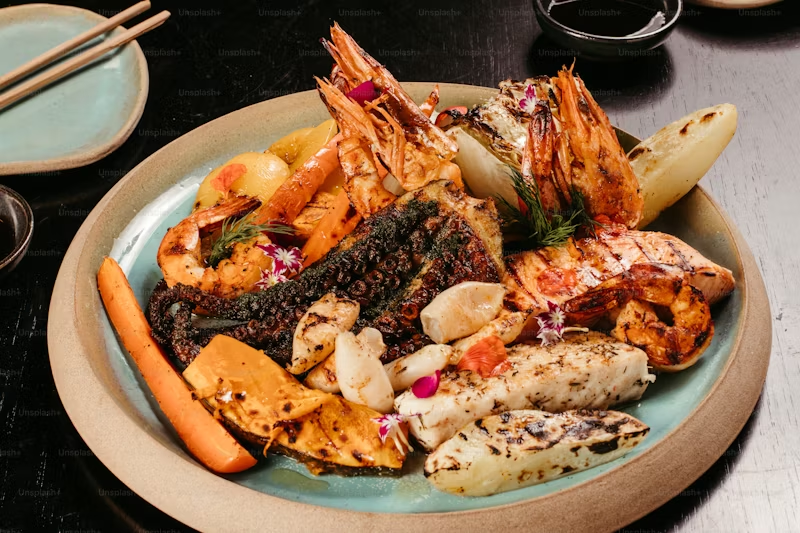
This Food Is Most Likely To Cause Food Poisoning (And It’s Not Meat)
You might assume that undercooked meat, poultry, or seafood is the biggest culprit when it comes to food poisoning. Surprisingly, one of the healthiest food groups is the leading cause of foodborne illnesses. Let’s dive into the foods that are most likely to make you sick — and it’s not what you’d expect.
Surprise Culprit

Leafy greens, often hailed as the ultimate health food, have topped the list of foods responsible for food poisoning in the U.S. between 2017 and 2022. Consumer Reports revealed that greens like lettuce, spinach, and kale were responsible for 614 illnesses and 50 recalls during this period.1 Contaminants like E. coli and Listeria are the primary culprits, usually stemming from contaminated water in growing fields or improper handling during processing.
While washing greens is important, it’s not always enough. When water used for irrigation is polluted, especially from nearby cattle feedlots, bacteria like E. coli can thrive. Pre-packaged salads can also become contaminated in processing plants, leading to widespread outbreaks.
Why Leafy Greens?

One might wonder how such a healthy food group could cause so much harm. Leafy greens are especially vulnerable to contamination due to the way they are grown and processed. Since they are often eaten raw, harmful bacteria like Salmonella and Listeria can easily enter our food chain without being killed off by cooking.2 This makes them a higher risk for foodborne illness compared to many other food items.
Despite their nutritional benefits, leafy greens were also responsible for the most deaths related to food poisoning, with 11 fatalities recorded over the past five years.
Another Surprising Offender

Another food group you might not expect to be dangerous is fruit, particularly melons and pre-packaged fruit salads. Cantaloupe and watermelon, for instance, have a high risk of contamination from bacteria like Listeria, which can grow on their rough skins, leading to food poisoning. Between 1973 and 2011, there were 34 reported outbreaks related to melons in the U.S., leading to 46 deaths. The rough texture of cantaloupe skins provides a perfect hiding spot for bacteria, making them difficult to clean properly.
Frozen and fresh berries, especially those in pre-packaged salads, can also carry risks. They have been linked to outbreaks of hepatitis A and other viruses, primarily due to unsanitary conditions during harvesting and processing.
A Starch with Hidden Risks

Rice is another surprising culprit of food poisoning. Uncooked rice can harbor Bacillus cereus, a bacterium that produces toxins capable of surviving the cooking process. When cooked rice is left out at room temperature, these spores multiply, causing foodborne illnesses. That’s why it’s crucial to refrigerate rice promptly after cooking and ensure it’s reheated thoroughly before consumption.
Deli Meats

Though not as surprising as leafy greens or fruit, deli meats still pose a significant food safety risk. Ham, salami, and hot dogs can harbor bacteria like Listeria, which thrive in cold environments, making even refrigerated meats risky^5. Sliced meats from deli counters are particularly vulnerable because contamination can occur during processing, handling, or storage.
To minimize risk, store deli meats properly in the refrigerator and cook them thoroughly before consumption.
Unpasteurized Dairy

Unpasteurized milk and dairy products are far more likely to cause food poisoning compared to their pasteurized counterparts. Products made from raw milk can harbor harmful bacteria like Campylobacter and Salmonella, leading to severe illness. In fact, unpasteurized milk is at least 150 times more likely to cause foodborne illness than pasteurized products.
To reduce your risk, always opt for pasteurized dairy and avoid raw milk products.
Risks from the Sea

Fish and shellfish, if not stored or cooked properly, can be a source of food poisoning as well. Histamine is a toxin produced in fish when they’re stored improperly, leading to scombroid poisoning, a common type of foodborne illness. Shellfish such as oysters and mussels are particularly risky due to the potential for contamination with toxins produced by algae.
Always ensure that seafood is stored at the right temperature and that shellfish are cooked thoroughly.
Reducing Your Risk

Although foodborne illnesses are common, there are steps you can take to reduce your risk:
- Always wash your hands before preparing food.
- Rinse fruits and vegetables thoroughly.
- Store food at safe temperatures, especially perishable items like dairy and meat.
- Avoid cross-contamination by using separate cutting boards and utensils for raw meat and vegetables.
By following these guidelines, you can minimize your risk of food poisoning while still enjoying the foods you love.




